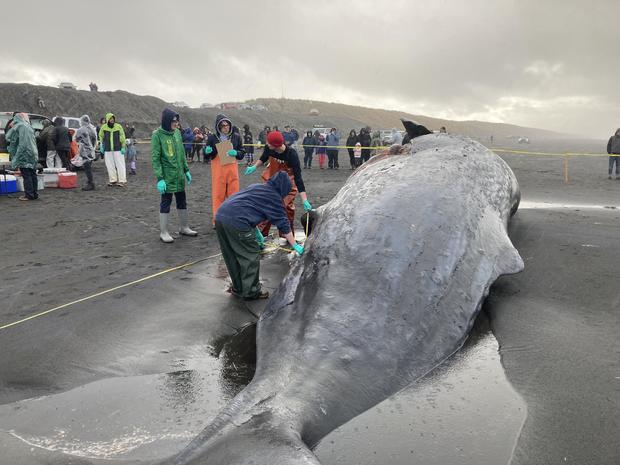Dead sperm whale is found on Oregon’s coast
Tragedy struck the Oregon coast over the weekend as a 40-foot sperm whale washed up on the shore after being killed by a ship.

A few minutes every morning is all you need.
Stay up to date on the world's Headlines and Human Stories. It's fun, it's factual, it's fluff-free.
The backstory: Sperm whales are large-toothed whales that can reach around 60 feet (18 meters) in length and weigh more than 90,000 pounds (40 metric tons). They were almost wiped out by the whaling industry back in the day (19th and 20th centuries.) Even though the global population is estimated somewhere around 800,000 (down from about 2 million), these majestic creatures are still considered depleted and endangered due to commercial whaling.
The development: Tragedy struck the Oregon coast over the weekend, as a 40-foot (12 meters) sperm whale washed up on the shore after being killed by a ship. The National Oceanic and Atmospheric Administration's (NOAA) Fisheries agency conducted a necropsy and found a large gash on the whale's side. The 20-year-old male sperm whale was an unusual sight on the northern Oregon coast, as most of them have migrated south for the winter.
But the story doesn't end there. Biologists with the NOAA's West Coast Marine Mammals Stranding Network also removed the whale's lower jaw and teeth for further study and to protect the remains from looters. Now, the question remains – how will they dispose of the mammoth carcass? In the meantime, officials reminded the public to keep their distance and pay their respects from afar.
Key comments:
"It looks like a fairly young whale," said Liz Slooten, a trustee of the New Zealand Whale and Dolphin Trust and professor at the University of Otago. "It could be one of these whales that has recently left its pod with its mom and grandma and all the other whales that it knows."
"There was hemorrhaging, so that indicates that the animal was alive when it was struck," Michael Milstein, a spokesperson for NOAA Fisheries West Coast region. "Sperm whale teeth and jaws are very prominent and quite lucrative on the black market. We removed the jaws so it did not get liberated by other means."
"So the presence of the sperm whale at this time of year is somewhat unusual but we have had sperm whale strandings in winter before," said Milstein. "Sperm whales are the third most common species of whale to strand in Oregon, after gray whales and humpback whales."




Comments ()